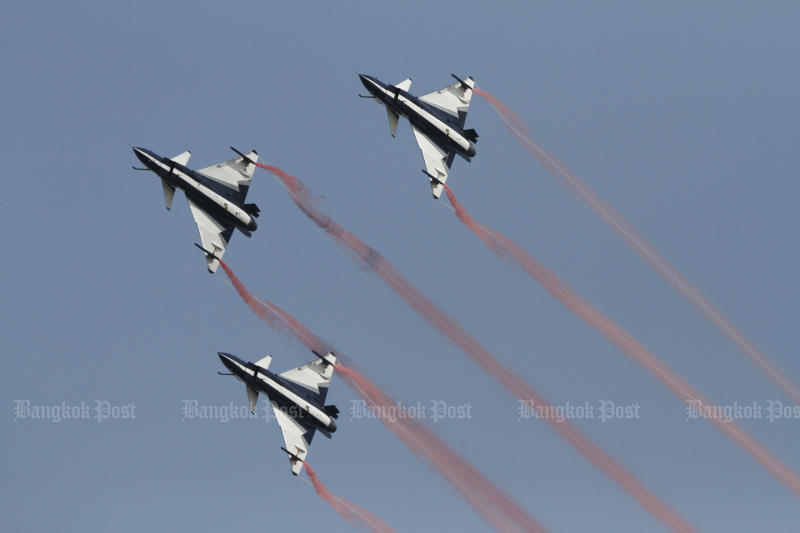
BEIJING - China has revealed details of its joint military exercises with Thailand, which involve the use of special forces for the first time and have been described as containing "all the elements needed for a small-scale war".
The Falcon Strike 2024 drills started in northeast Thailand on Sunday and, according to Chinese state broadcaster China Central Television (CCTV), are more complex and broad ranging than previous exercises involving the two countries.
CCTV said the exercises, which run until Aug 29, would cover elements such as cross-border support, force deployment, joint air defence, deterrence and debriefing.
It said the exercises involved the use of special forces, warplanes and helicopters to "beef up military cooperation and address shared security challenges", and that commanders on both sides were confident it would improve their troops' tactical and technical skills.
Fu Qianshao, a military analyst and former PLA officer, said it was a "significant change with far-reaching implications".
"The five-stage exercises … are all the elements needed for a small-scale war," Fu added.
"The military exercise between China and Thailand, which originally focused more on joint training, has now taken on a more realistic combat nature."
China and Thailand have been conducting annual air force exercises since 2015, with a two-year break during the coronavirus disease 2019 (Covid-19) pandemic.
Fu said the involvement of special forces and helicopter drills this year added a "new dimension", saying: "The helicopters, in particular, allow for a low-altitude approach, enabling forces to reach key areas directly without the need for parachutes."
Song Zhongping, a former PLA instructor, said the use of China's long-range Y-20 transport planes in combination with special forces was a significant element of the drill.
He said that army and navy special forces would be involved, and he thought the exercise would include drills to airdrop these troops "deep into enemy areas to occupy certain important targets and capture important personnel".
"This is no longer a drill only with air force tactics, but a joint force combat exercise," he said.
The exercise is taking place at the Udorn Royal Thai Air Force Base, which was formerly used by the United States Air Force.
It comes as China is seeking to strengthen its defence relations across Southeast Asia as part of a wider strategy to counter US influence.

Pilots demonstrate their skills during a Thai-China joint air exercise at the Royal Thai Air Force's Wing 1 base in Nakhon Ratchasima province in November 2015. (Photo: Pattanapong Hirunard)
This year it has also staged joint exercises with Cambodia and Laos and agreed to boost security cooperation with Vietnam during this week's visit by the country's new leader To Lam.
Thailand, as the only US ally on the Southeast Asian mainland, offers a unique opportunity for China to expand its influence in the region.
The kingdom's relationship with Washington has come under pressure since the 2014 military coup that overthrew the democratically elected government.
China has stepped into this breach by boosting its military ties with Bangkok and striking several arms deals.
